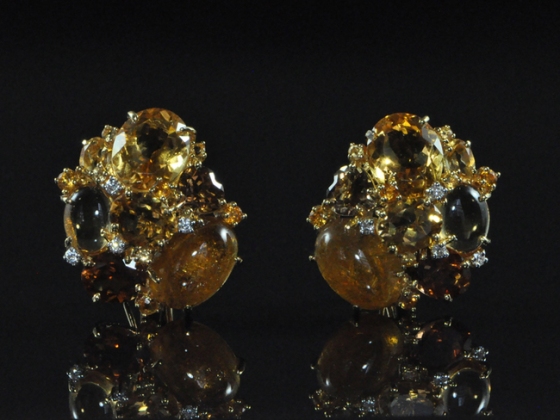
An extraordinary set of suffragette jewellery from Moira Jewels at Richard Ogden. Purple is represented by amethysts, green by peridots and white by pearls.
This exceptional piece of jewellery, referred to as Suffragette Jewellery, came into the shop the other day and since suffragette jewellery has such an important and fascinating role in history, I thought that we would take a closer look:

Suffragette Jewellery from Moira Jewels
The term Suffrage means the right to vote through the democratic process and in the late 19th and early 20th century members of women’s organisation movements were referred to as Suffragettes. In 1897 the The National Union of Women’s Suffrage Societies (NUWSS) was formed. The NUWSS weren’t very successful in their progress for the cause, something that a few members found very frustrating, and in 1903 campaigner Emmeline Pankhurst broke away from the party and founded The Women’s Social and Political Union (WSPU) together with her daughters.
The motto of the WSPU was “Deeds not Words” and they took a rather militant approach to campaigning, when compared to other suffragist group at the time; committing acts of arson and vandalism and going on hunger strikes when imprisoned. You may have heard of Emily Davison, who died after jumping out of the crowd in front of King George V’s racehorse in the Epsom Derby in June 1913.
In 1906 the British press started referring to the ladies as Suffragettes and there was widespread support for the cause from the public. In 1908 the official colours of WSPU were declared: Purple stood for dignity, White for purity and Green for hope – and you can see these three colours in the pictures above and below. The WSPU’s honorary treasurer Mrs Pethick Lawrence described the meaning of the colours as:
“Purple…is the royal colour…It stands for
the royal blood that flows in the veins of
every suffragette, the instinct of freedom
and dignity…white stands for purity in
private and public life…green is the colour
of hope and the emblem of spring.”
Protesters in their hundreds would wear the colours and march behind similarly coloured banners – and Mappin & Webb, London jewellers to royalty, issued a catalogue of Suffragette Jewellery in time for Christmas 1908. The same year 30,000 women took part in a demonstration in Hyde Park and they all wore accessories in these colours to express their commitment to the cause. Between a quarter and half a million people came to watch this extraordinary march.
In 1909, leading suffragettes Emmeline Pankhurst and Louise Eates were both presented with specially commissioned pieces in purple, white and green. In 1917 the WSPU changed their name to The Women’s Party and finally, in 1918 British women over the age of 30, who met certain property qualifications, were given the right to vote. In 1928 suffrage was extended to all women over the age of 21.





































